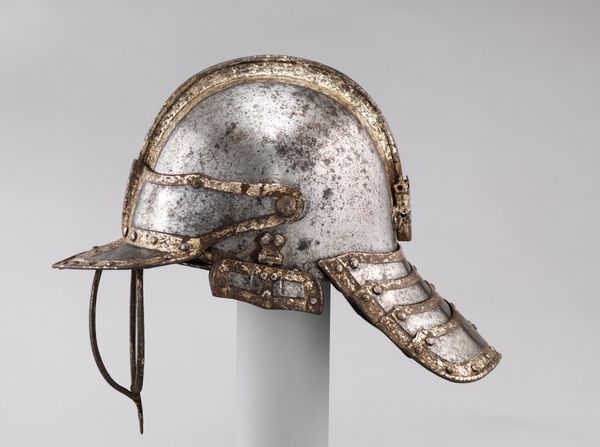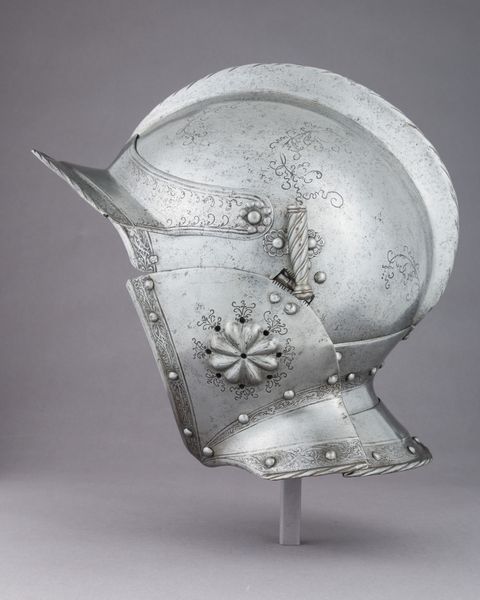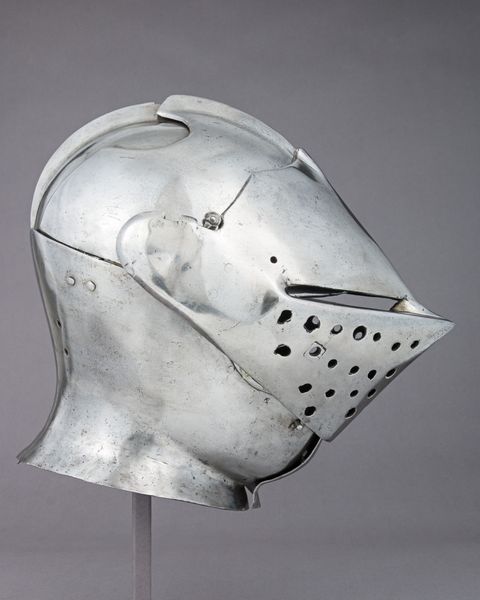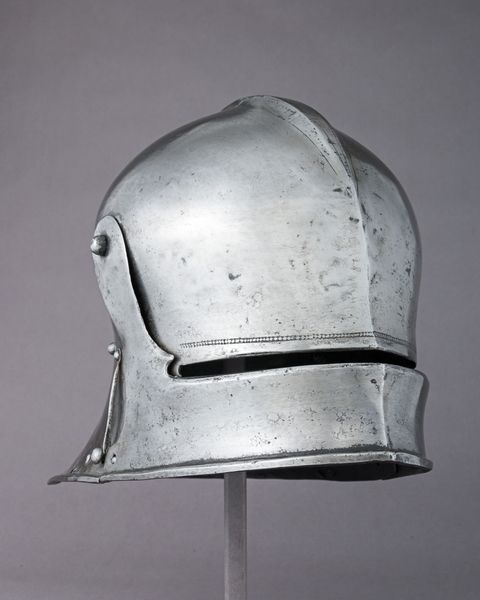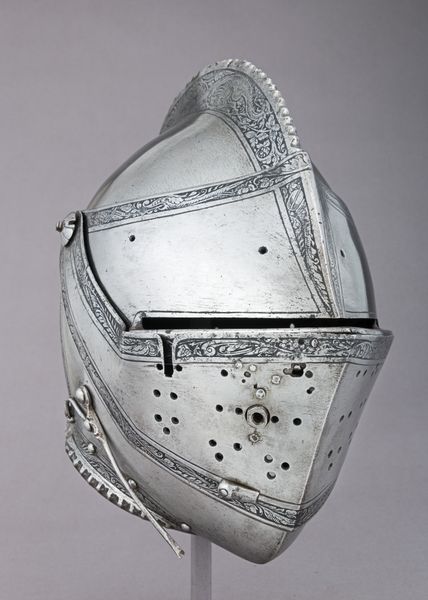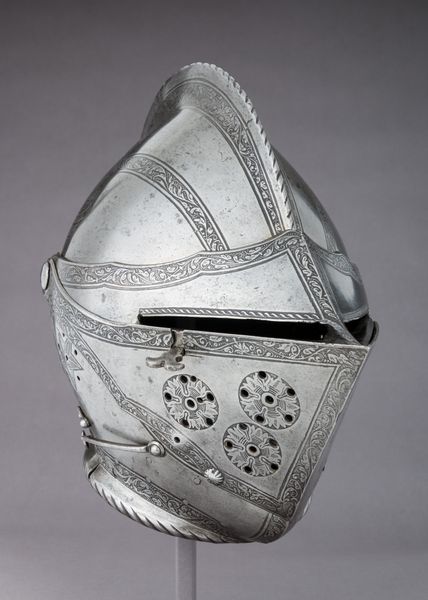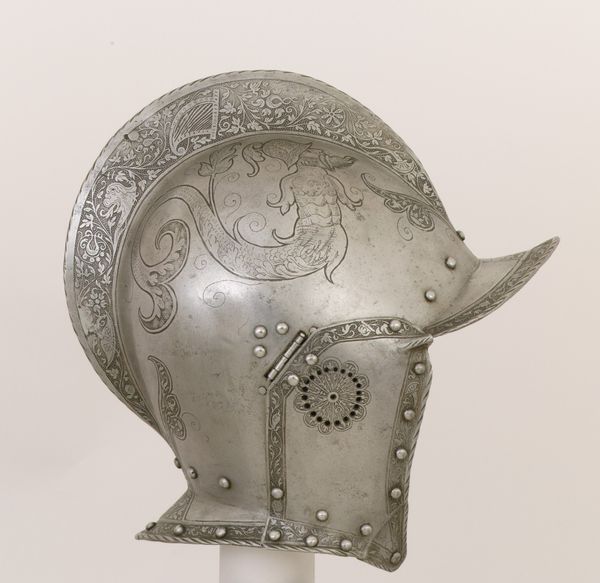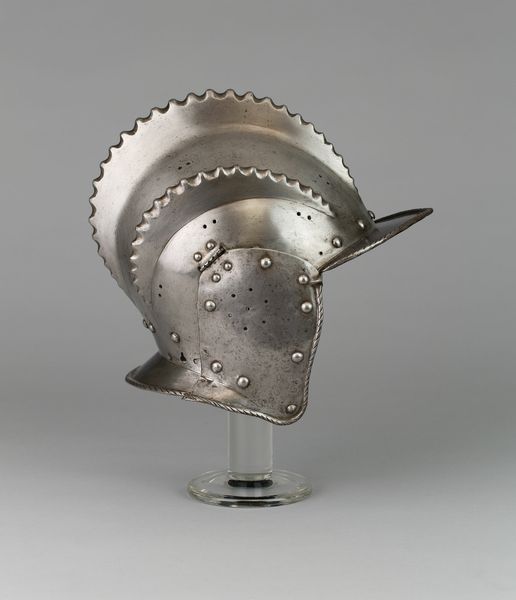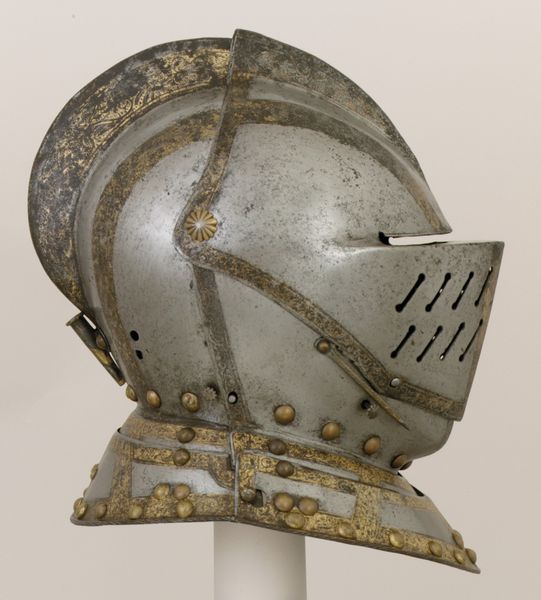
metal, sculpture
#
medieval
#
metal
#
sculpture
#
sculpture
#
armor
Dimensions: H. 12 1/2 in. (31.8 cm); W. 9 3/4 in. (24.8 cm); D. 11 7/16 in. (29.1 cm); Wt. 8 lb. 8 oz. (3866 g)
Copyright: Public Domain
Curator: Staring at it, I'm immediately struck by its strangely melancholic aura... all this cold, hard metal formed into this protective shell for the head, it feels almost lonely, you know? Editor: We're looking at an "Armet for the Tourney," dating from roughly 1490 to 1545. It's crafted from steel, and currently resides in the Metropolitan Museum of Art. It's a product of the artistry of Kolman Helmschmid. It makes me think about displays of power, status, and courtly performance. Curator: Yes, but isn't it all quite fragile? All of this incredible detail – the delicate etching, those little rivets… it’s made to withstand impact but somehow evokes the preciousness of life that needs protecting. The weight of history. I find myself wondering, whose head did this adorn? And were they nervous? Did they have time to appreciate the tiny floral patterns etched into its surface as they rode into battle, or the tournament, which has its own dangerous rules and theater? Editor: Helmets like this represent a complex interplay of social roles. Tournaments served less as raw combat and more as ritualized displays of prowess and noble identity, which is why we see a great deal of artistic skill at play. This kind of artistry reinforces authority. The cost of such armour would limit its ownership to nobility, which gives another voice to power through crafted objects. Curator: Authority, yes, but what price? Maybe this armor’s melancholic aura comes from holding that tension. Did those who donned it ever resent the constraints of those roles, the burden of always playing the part? Editor: You are not wrong: armor does create restrictions. Social, bodily, and practical considerations meant wearing something like this must have always been performative and potentially fraught. Armor communicated, intimidated, and protected, but, more than that, it symbolized one's belonging in the social order. Curator: I find the idea so moving – art designed for something as brutally functional as protection becoming this vessel of longing, a whisper of fragility, despite its strength. Editor: Precisely. And isn't that the enduring paradox of arms and armor? Function meeting symbolic expression. I always wonder, when looking at such things, what were the precise social and political circumstances when the maker applied his tools. And what aspirations did those finished forms give voice to?
Comments
No comments
Be the first to comment and join the conversation on the ultimate creative platform.
